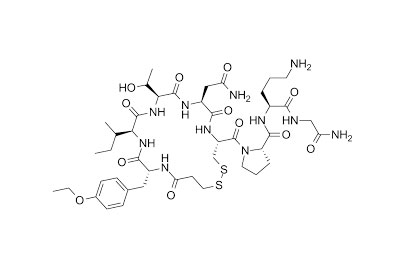How to synthesize peptides with secondary structure smoothly
Peptide is a kind of bioactive substance formed by the combination of various amino acids through peptide bonds. It has a wide range of biological activities and good safety, and is widely used in medicine, food, cosmetics, agriculture, animal husbandry and other fields. As an important way of chemical synthesis of peptides, solid phase synthesis has been widely used because it avoids the lengthy recrystallization or separation steps in liquid phase synthesis and reduces the loss in the synthesis process. However, some hydrophobic amino acid fragments are easy to appear β- Peptides with secondary structure such as folding are still difficult to synthesize, especially the difficult sequence appearing in the 6th to 16th amino acid residues. The deprotection and coupling of almost every amino acid are difficult to complete successfully. There are many missing peptides and truncated peptides, and the yield is very low
At present, there are many ways to solve the difficulties in the synthesis of polypeptide difficult sequences, including the use of mixed solvents, reducing the resin load, using high dissociation salts, fragment condensation, introducing chemically modified peptide chains and using microwave technology for synthesis, etc

The main reasons for the formation of "difficult sequence"
According to the different causes of formation, the peptide "difficult sequence" can be divided into two types: random and non-random. The random "difficult sequence" is related to the hydrophobicity and steric resistance of amino acids. When the steric hindrance of amino acid is large (for example, the side chain of amino acid has a large protective group), the diffusion of acylation reagent is difficult; Or when the load of the resin is large, the peptide chain on the resin is not completely solvated, and the coupling result is poor. Random difficult peptides can be roughly expressed by hydrophobic parameters, but there is still no "golden rule" that can accurately predict.
It is generally believed that when the hydrophobic parameter reaches a positive number, its synthesis is quite difficult. The non-random "difficult sequence" refers to the formation of stable and specific β- The peptide chain sequence of the folded structure. The peptide chain of this kind of sequence is prone to hydrogen bond association at a certain length, and molecular aggregation is also easy to occur between the peptide chain and the resin carrier. The amino group of the peptide molecule may be buried in the depth of the secondary structure, thus preventing the condensation reaction. This phenomenon often occurs in the synthesis of insoluble peptides. It is easy to form this kind of peptide when synthesizing peptides with amino acids protected by 9-fluorene methoxycarbonyl (Fmoc) β- Folded structure. The synthesis process needs to change the reaction conditions, such as increasing the temperature, to destroy this configuration, but this may lead to adverse reactions such as product racemization or early removal of Fmoc protection.
There are many ways to solve the difficulties in the synthesis of "difficult sequence" peptides, which can be carried out by changing the reaction system, changing the reaction conditions, changing the synthesis strategy, and adopting new synthetic technology.
1 Change the reaction system
When the mixed solvent peptide resin reaches the full swelling state in the solvent, it is conducive to the condensation reaction. When hydrogenated solvents such as N-methylpyrrolidone (NMP), N, N-dimethylformamide (DMF), dimethyl sulfoxide (DMSO), N, N-dimethylacetamide (DMAC) are selected, their carbonyl group (C=O) and N-H on the peptide chain can form hydrogen bonds, thus inhibiting the aggregation caused by the formation of hydrogen bonds on the peptide chain itself, and then inhibiting β- Collapsed generation. Therefore, the selection of appropriate mixed solvents, such as DMSO/DMF, 6N guanidine/DMF, isopropanol/DMF, dichloromethane (DCM)/DMF/NMP, trifluoroethanol (TFE), is conducive to the condensation reaction
From omizzur | custom peptide synthesis company in China
Read Related Articles:
Copyright © 2020 Omizzur Inc | Terms & Conditions | Privacy Notice | Sitemap